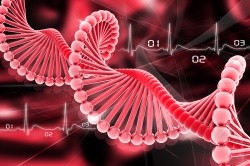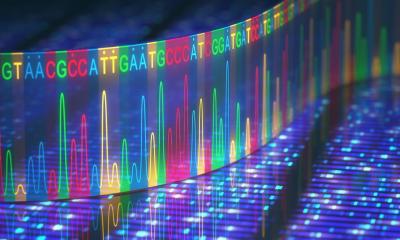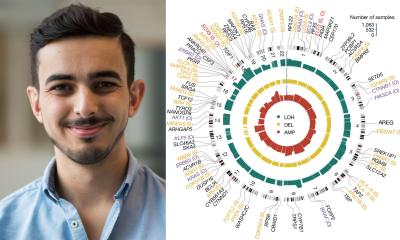First full genome of a living organism assembled
Researchers in Canada and the U.K. have for the first time sequenced and assembled de novo the full genome of a living organism, the bacteria Escherichia Coli, using Oxford Nanopore's MinIONTM device, a genome sequencer that can fit in the palm of your hand.

The findings, which were published today in the journal Nature Methods, provide proof of concept for the technology and the methods lay the groundwork for using it to sequence genomes in increasingly more complex organisms, eventually including humans, said Dr. Jared Simpson, principal investigator at the Ontario Institute for Cancer Research and a lead author on the study.
"The amazing thing about this device is that it is many times smaller than a normal sequencer -- you just attach it to a laptop using a USB cable," said Simpson. "And while our work is a demonstration of the capabilities of the technology, the most significant advance is in the methods. We were able to mathematically model nanopore sequencing and develop ways to reconstruct complete genomes off this tiny sequencer."
While standard sequencing platforms can either generate vast amounts of data, or read long enough stretches of the genome to allow complete reconstruction, the Nanopore device has the potential to achieve both goals according to Simpson. "Long reads are necessary to assemble the most repetitive parts of genomes but we need a lot of reads if we want to sequence human genomes. The small size of the MinION suggests there is room to scale up and sequence larger and more complex samples," Simpson said.
A drawback of the technology is that the single reads it produces are currently much less accurate than the reads produced by larger devices. Strong bioinformatics tools are needed to correct errors. The methods Simpson and colleagues developed are able to overcome the error rate and compute a more accurate final sequence.
"This was a fantastic example of a successful long distance research collaboration between Canada and the UK," said Dr. Nicholas Loman, a co-lead author on the paper and an Independent Research Fellow from the Institute of Microbiology and Infection at University of Birmingham. "We explored new ways of working, including hosting a hackathon to explore new algorithm development and using shared computing resources on the Medical Research Council funded Cloud Infrastructure for Microbial Bioinformatics (CLIMB) based in the UK Midlands and Wales."
The method of assembly the authors devised had three stages. First, overlaps between sequence reads are detected and corrected using a multiple alignment process. Then the corrected reads are assembled using the Celera assembler and finally the assembly is refined using a probabilistic model of the electric signals caused by DNA moving through the nanopore.
"This work has incredible potential," said Dr. Tom Hudson, president and scientific director of the Ontario Institute for Cancer Research. "Scaled up, this technology could one day be used to sequence tumour genomes. The device's portable nature would allow for sequencing to become far more accessible, bringing the option of more personalized diagnosis and treatment to more patients."
Source: Ontario Institute for Cancer Research
16.06.2015











